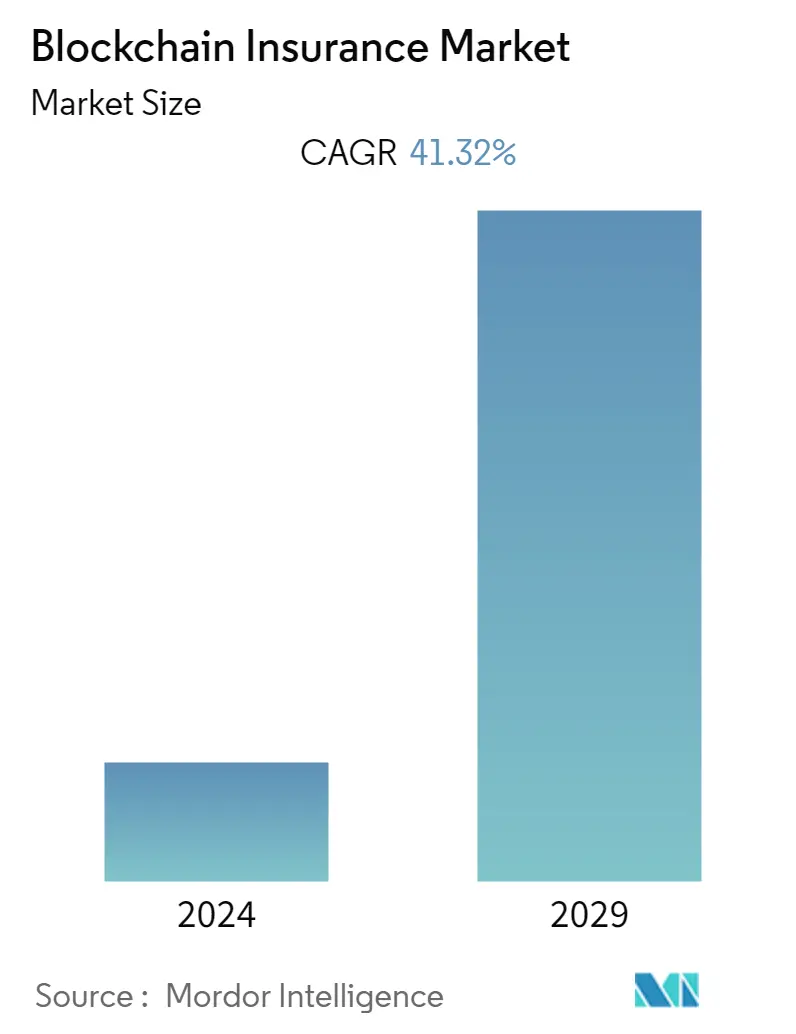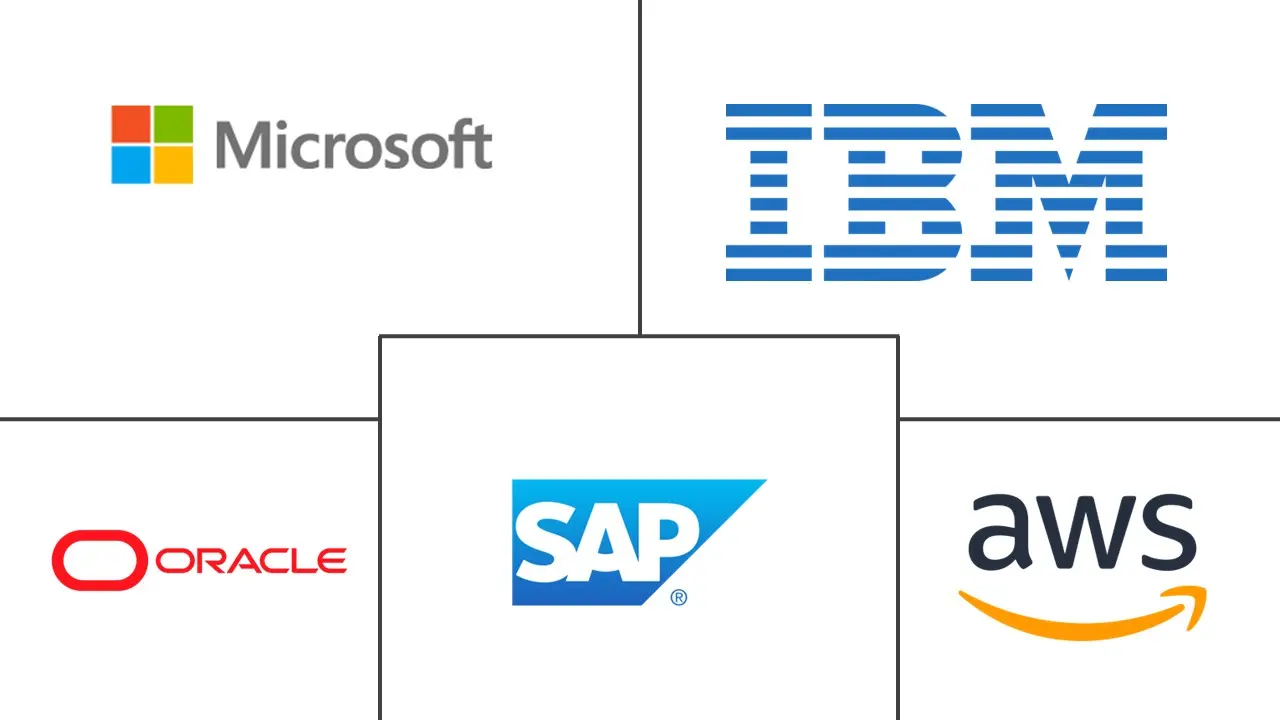Market Size of Blockchain Insurance Industry

| Study Period | 2019 - 2029 |
| Base Year For Estimation | 2023 |
| CAGR | 41.32 % |
| Fastest Growing Market | Asia Pacific |
| Largest Market | North America |
| Market Concentration | High |
Major Players
*Disclaimer: Major Players sorted in no particular order |
Need a report that reflects how COVID-19 has impacted this market and its growth?
Blockchain Insurance Market Analysis
The Blockchain Market in the Insurance Industry was valued at USD 473.4 million in the current year, and it is anticipated to reach USD 3643.66 million by the end of the forecast period, registering a CAGR of 41.32% during the forecast period. Blockchain technology is helping the insurance business in drastically changing operations, offering a diverse range of advantages like lower costs, improved customer experiences, increased productivity, increased transparency, and more.
- Insurance fraud can be eradicated by insurers using blockchain insurance claims. Because of the immutable property of blockchain, moving insurance claims into a shared ledger among insurance companies that cannot be altered will eventually eliminate fraud. According to the FBI, it is estimated that non-health insurance fraud costs the economy more than USD 40 billion annually. As a result of higher premiums, insurance fraud costs the typical American family between USD 400 and USD 700 annually. The increase in the number of insurance frauds is expected to drive the deployment of blockchain in the insurance industry.
- The insurance market is integral to the global economy, covering personal and business risks. According to the International Monetary Fund, the market size of non-life insurance in the Gulf Cooperation Council countries was predicted to increase from USD 22.7 billion in 2021 to USD 26.5 billion in 2026. In comparison, the market size of life insurance in the GCC was anticipated to grow from USD 3.8 billion in 2021 to USD 4.6 billion in 2026 and is expected to have lucrative opportunities for growth. Blockchain technology can speed up banking and lending processes while lowering counterparty risk, issuance, and settlement times. It enables real-time financial verification, authenticated documentation, and KYC/AML data, lowering operational risks. Real-time payments against assets are made possible by blockchain technology, which results in significant cost reductions. The usage of blockchain technology for payment applications is one of the current trends. To transform payments, market players are developing advanced blockchain technologies. In the insurance industry, using blockchain for payments helps lower risks while enhancing efficiency and transparency in payment processes. Several institutions worldwide have developed blockchain-based payment networks, including Banco Masventas (Argentina), MUFG, and Taipei Fubon Commercial Bank.
- The vendors in the blockchain market in the insurance industry are moderately consolidated with an array of different application purposes. However, major vendors such as Dell, Amazon Web Services Inc., Oracle Corporation, and many more are highly preferred blockchain product/solution providers across various insurance applications. To meet the various demands of the customers, blockchain firms are providing new solutions. For instance, in May 2022, Bermuda's regulatory authorities gave given their approval to Nayms, a blockchain insurance marketplace. With an initial focus on offering insurance protection in the Bitcoin arena, as its name implies, the concept has been inspired by the Lloyds insurance marketplace. Additionally, it is introducing a second product called crypto-native prisoners, a new captive offering from Nayms. Large corporations that establish a subsidiary to provide insurance to group firms frequently utilize captive insurance. Large blockchain protocols now routinely reserve a treasury fund to be utilized in the event of a hack or other problem in the crypto realm.
- However, the applications of blockchain technology are still in their infancy across several industry verticals. Even if the insurance sector has demonstrated a favorable trend in adopting technology, there is still more that needs to be done to raise awareness of distributed ledger technology (DLT) and its many potential applications in the insurance sector. One of the biggest problems is the lack of knowledge, which might restrict the growth of the studied market.
- Furthermore, the conflict between Russia and Ukraine and COVID-19 is likely to impact the electronics industry. The conflict has already exacerbated the semiconductor supply chain challenges and the chip shortage that have impacted the industry for some time. This could restrain the growth of the studied market during the forecast period.
